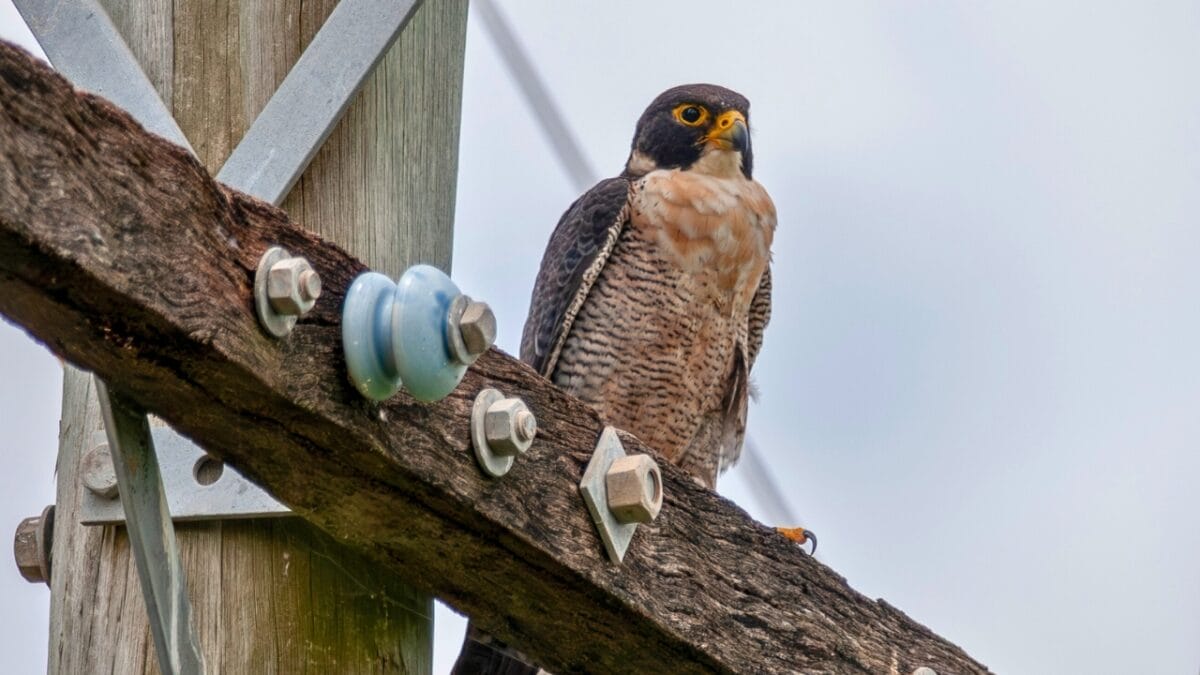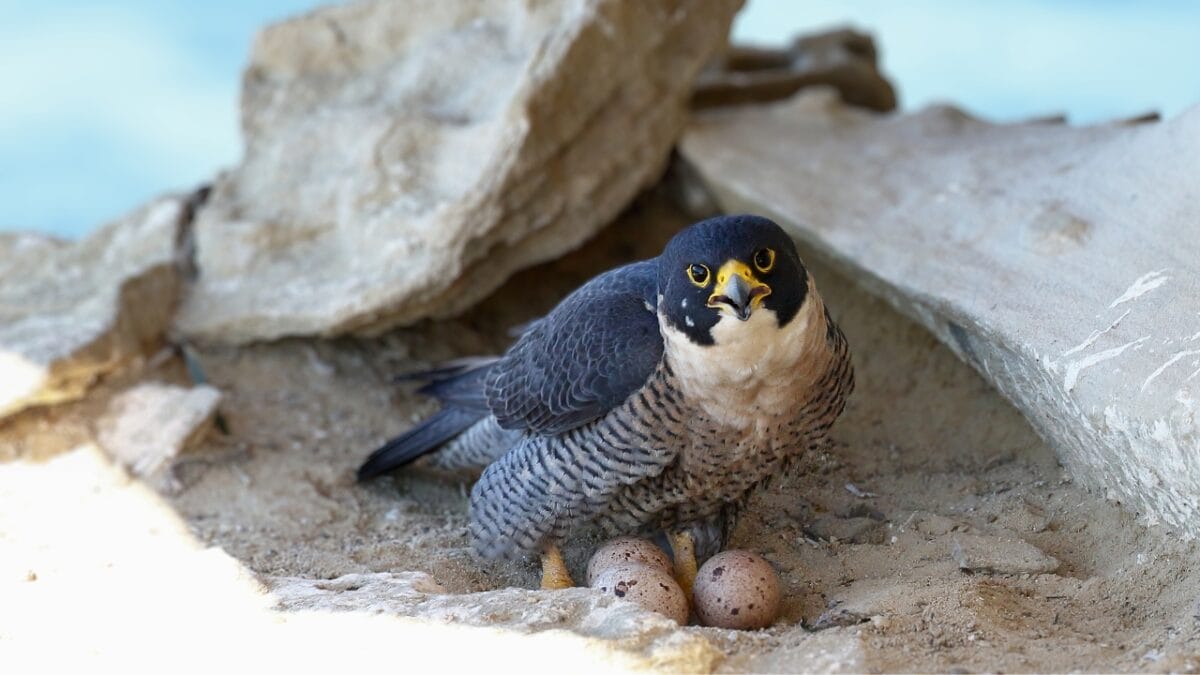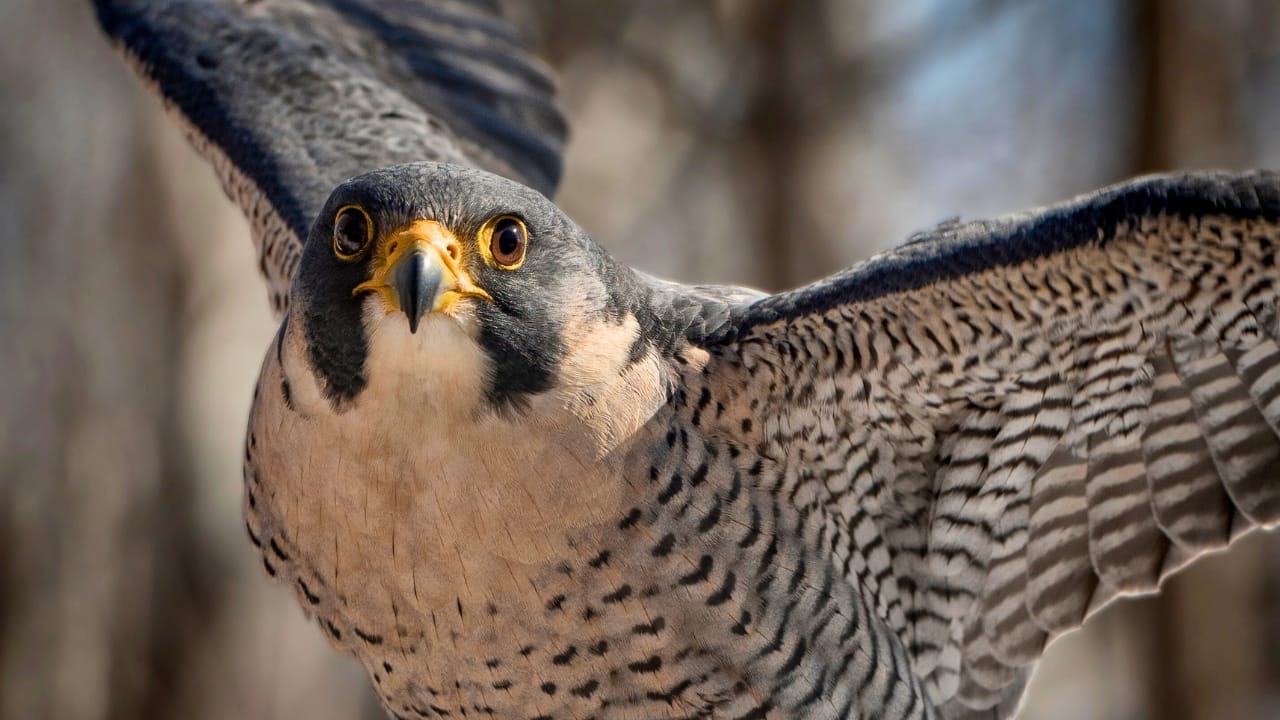In a remarkable tale of recovery, the peregrine falcon has gone from the brink of extinction in Illinois to once again soaring through the skies of the Prairie State. This iconic bird’s resurgence is a testament to the power of conservation efforts and the resilience of nature.
From Endangered to Thriving
Peregrine falcon populations in Illinois and across North America plummeted in the 1950s and 1960s, largely due to the widespread use of DDT and other pesticides (ref). These chemicals accumulated in the falcons’ prey, causing reproductive failures and thinning eggshells.
By 1951, there were no known nesting pairs left in the state.
But thanks to a ban on DDT, captive breeding programs, and the tireless work of conservationists, peregrine falcons have made a dramatic turnaround. From 1986 to 1990, the Chicago Peregrine Program released 46 falcons at sites throughout Illinois to re-establish the population. Today, there are an estimated 20 breeding pairs in over 30 territories across the state.
Urban Adaptations

One of the most fascinating aspects of the peregrine falcon’s comeback has been its ability to thrive in urban environments. While historically nesting on cliffs and bluffs, these birds have readily adapted to using skyscrapers, bridges, and other tall structures as nesting sites.
Cities like Chicago now boast multiple nesting pairs, with falcons becoming a regular sight in the downtown skyline. The birds seem to view towering buildings as artificial cliffs, finding ample prey in the form of pigeons and other urban birds.
Webcams have even been set up to allow the public to watch these majestic raptors raise their young high above the bustling streets.
Continued Monitoring & Protection
While the peregrine falcon’s recovery is undoubtedly a success story, conservationists stress the importance of ongoing monitoring and management. The birds were removed from the federal endangered species list in 1999 and the Illinois state list in 2015 (ref), but they still face potential threats.
The Chicago Peregrine Program (ref), now based at The Field Museum, continues to oversee the state’s falcon population. This includes banding chicks, tracking nesting pairs, and rehabilitating injured birds.
Efforts are also underway to educate the public about these incredible raptors and the vital role they play in urban ecosystems.
A Symbol of Hope

As we face mounting environmental challenges, the peregrine falcon’s resurgence offers a beacon of hope. It demonstrates that with dedicated effort, sound policy, and a respect for the natural world, even species on the brink can be brought back from the edge.
So the next time you spot a peregrine falcon soaring above the Chicago skyline or perched atop a towering skyscraper, take a moment to appreciate this living symbol of conservation success. These swift and powerful birds remind us of nature’s resilience and our own capacity to make a difference.
Read Next

Imagine looking up to see a bird with a wingspan wider than a car is long. Such grandeur isn’t just in storybooks; it’s real and flying in our skies. We’re about to take you on a journey through the realm of the 11 largest flying birds in the world.
Davin is a jack-of-all-trades but has professional training and experience in various home and garden subjects. He leans on other experts when needed and edits and fact-checks all articles.

